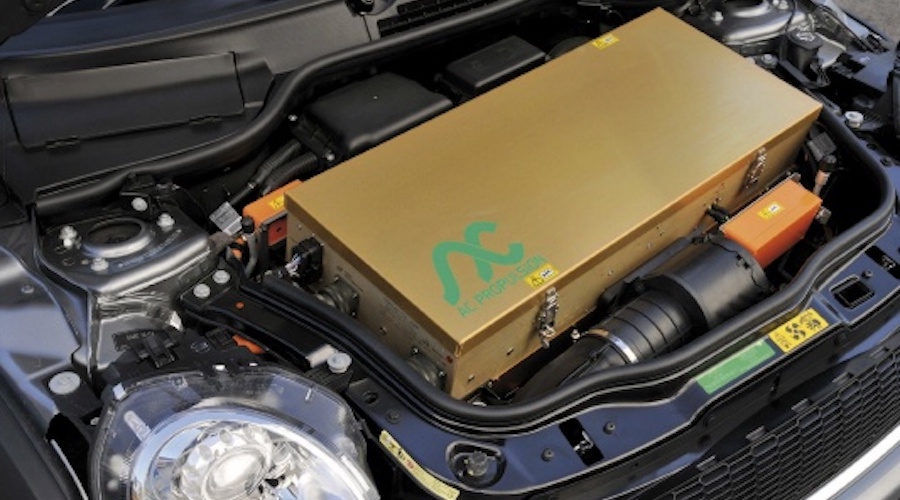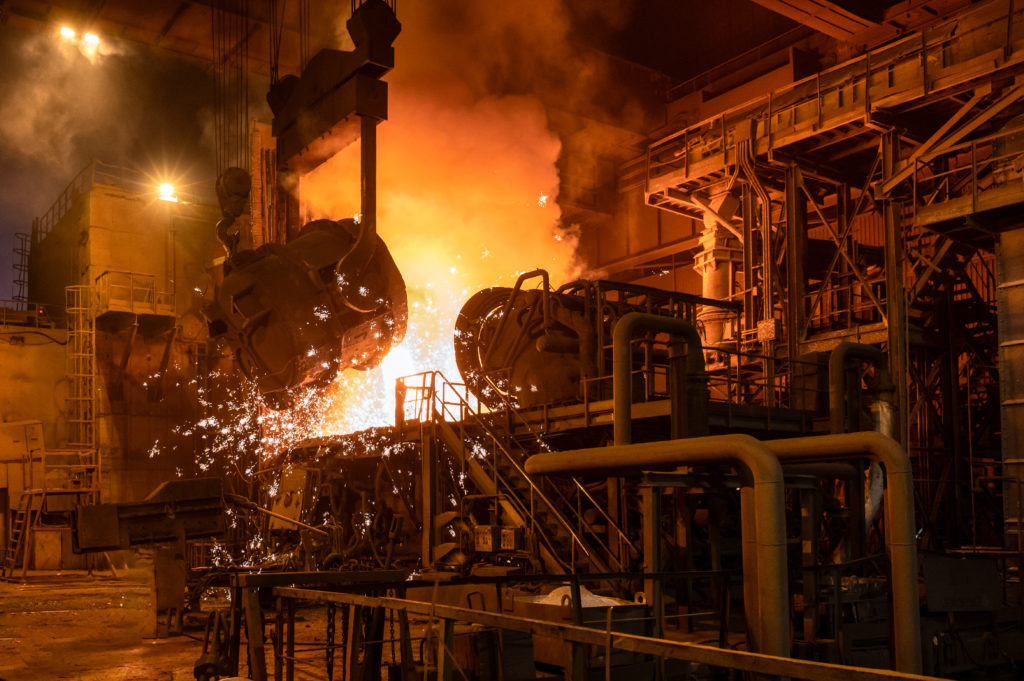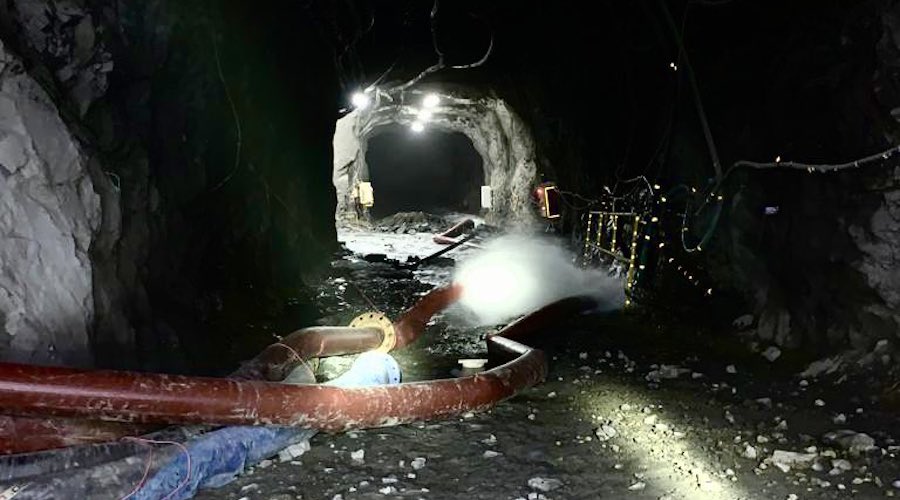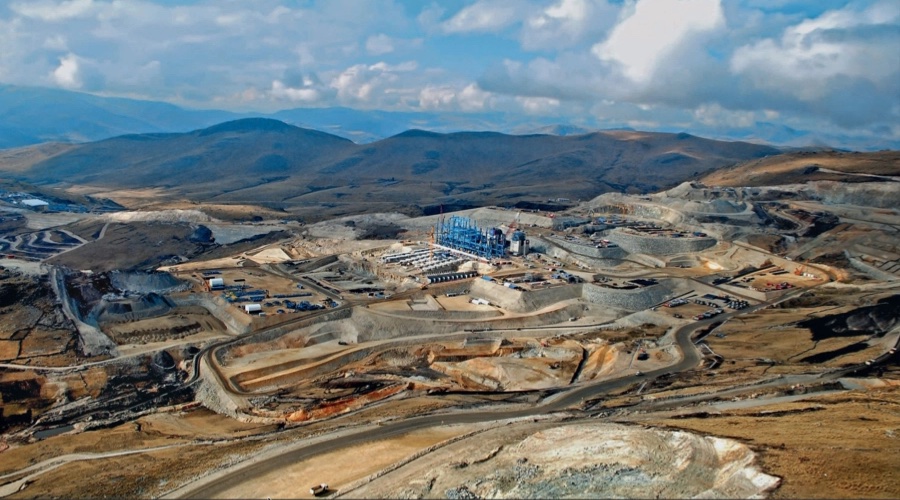Staff Writer | December 12, 2022 |

e-Mini Cooper battery. (Reference image by Underway in Ireland, Flickr.)
Researchers at the SLAC National Accelerator Laboratory and Stanford University developed a non-flammable electrolyte for lithium-ion batteries that allows the devices to continue to function at high temperatures without starting a fire.

Up until now, the flammable electrolyte used in Li-ion batteries has caused some of them to stop working and catch fire when their temperature rises too high.
The reason for this is that conventional electrolytes are made of a lithium salt dissolved in a liquid organic solvent, such as ether or carbonate. While this solvent improves battery performance by helping to move lithium ions around, it is also a potential firestarter.
Batteries generate heat as they operate. And if there are punctures or defects in a battery, it will heat up rapidly. At temperatures above 140 degrees F, the small molecules of solvent in the electrolyte start to evaporate, transforming from liquid to gas and inflating a battery like a balloon – until the gas catches fire and the whole thing goes up in flames.
Over the past 30 years, researchers have developed non-flammable electrolytes such as polymer electrolytes, which use a polymer matrix instead of the classic salt-solvent solution to move ions around. However, these safer alternatives don’t move ions as efficiently as liquid solvents do, so their performance has not measured up to that of conventional electrolytes.
This is why the SLAC/Stanford team wanted to produce a polymer-based electrolyte that could offer both safety and performance.
SAFE electrolyte
Led by Rachel Z Huang, first author of the study that presents the electrolyte, the group decided to add as much as they could of a lithium salt called LiFSI to a polymer-based electrolyte designed and synthesized by Jian-Cheng Lai, a postdoctoral scholar at Stanford University and co-first author of the paper.
“I just wanted to see how much I could add and test the limit,” Huang said. Usually, less than 50% of a polymer-based electrolyte’s weight is salt. Huang bumped that number to 63%, creating one of the saltiest polymer-based electrolytes ever.
Unlike other polymer-based electrolytes, this one also contained flammable solvent molecules. However, the overall electrolyte, known as Solvent-Anchored non-Flammable Electrolyte (SAFE), proved non-flammable at high temperatures during tests in a lithium-ion battery.
SAFE works because the solvents and salt work together. The solvent molecules help conduct ions, resulting in performance comparable to that of batteries containing conventional electrolytes. But, instead of failing at high temperatures like most lithium-ion batteries, batteries containing SAFE continue to operate at temperatures between 77–212 degrees F.
Meanwhile, the ample added salts act as anchors for the solvent molecules, preventing them from evaporating and catching fire.
Gooey electrolyte
Polymer-based electrolytes can be solid or liquid. Importantly, the solvents and salt in SAFE plasticize its polymer matrix to make it a goo-like liquid, just like conventional electrolytes.
According to the researchers, a gooey electrolyte can fit into existing, commercially available lithium-ion battery parts, unlike other non-flammable electrolytes that have emerged. Solid-state ceramic electrolytes, for example, must use specially designed electrodes, making them costly to produce.
“With SAFE there’s no need to change any of the manufacturing setups,” Huang said. “Of course, if it is ever used for production there are optimizations needed for the electrolyte to fit into the production line, but the work is a lot less than any of the other systems.”
The scientist and her colleagues believe that one application of SAFE may be in electric cars.
They explain that if the multiple lithium-ion batteries in an electric car sit too close together, they can heat each other up, which could eventually lead to overheating and fire. But, if an electric car contains batteries filled with an electrolyte like SAFE that is stable at high temperatures, its batteries can be packed close together without the worry of overheating.
In addition to mitigating fire risk, this means less space occupied by cooling systems and more space for batteries. More batteries increase the overall energy density, meaning the car could go longer between charging.
“So it’s not just a safety benefit,” said Huang. “This electrolyte could also allow you to pack in a lot more batteries.”
New synthesis method enhances the electrochemical performance of lithium sulfur batteries
IMAGE: THE BIFUNCTIONAL EFFECT OF GRAPEVINE-LIKE HIGH ENTROPY OXIDE COMPOSITES ON LITHIUM POLYSULFIDES view more
CREDIT: ZHENGZHOU UNIVERSITY, CHINA
The high energy and low cost features of lithium sulfur batteries (LSBs) have seen them become a promising energy storage technology for energy-intensive applications, such as portable devices and electric vehicles.
However, their commercial applicability is hampered by hysteretic electrode reaction kinetics and the shuttle effect of lithium polysulfides (the diffusion back and forth of polysulfide between anode and cathode).
In a study published in the KeAi journal Green Energy & Environment, a group of researchers from China describe a bifunctional high entropy metal oxide/carbon nanofibers (HEO/CNFs) interlayer they have designed via a simple electrospinning approach for LSBs.
Dr. Yongzhu Fu, a professor at Zhengzhou University in China, explains: “The combination of polar metal oxide and high entropy-induced chemisorption effect can effectively reduce the shuttle and loss of polysulfides in the cathode side. In view of these advantages, designing an efficient and characteristic high entropy metal oxides interlayer is advantageous for LSBs.”
Huarong Fan, a postgraduate student at Zhengzhou University, came up with the new method of synthesis and, according to Dr. Xin Wang, a professor at Zhengzhou University, the reason it works so well is because “the CNFs with highly porous networks provide transport pathways for Li+ and e−, as well as a physical sieve effect to limit lithium polysulfides (LiPSs) crossover. In particular, the grapevine-like HEO nanoparticles generate metal-sulfur bonds with LiPSs, efficiently anchoring active materials.”
The unique structure and function of the interlayer give the LSBs superior electrochemical performance, i.e., the high specific capacity of 1381 mAh g−1 at 0.1 C and 561 mAh g−1 at 6 C.
According to Prof. Wang, “this work not only establishes an effective way to prepare HEO interlayers for LSBs, but also contributes to the advancement of high entropy materials.”
###
Contact the corresponding author: Xin Wang, wangxin0620@zzu.edu.cn
The publisher KeAi was established by Elsevier and China Science Publishing & Media Ltd to unfold quality research globally. In 2013, our focus shifted to open access publishing. We now proudly publish more than 100 world-class, open access, English language journals, spanning all scientific disciplines. Many of these are titles we publish in partnership with prestigious societies and academic institutions, such as the National Natural Science Foundation of China (NSFC).
JOURNAL
Green Energy & Environment
METHOD OF RESEARCH
Experimental study
SUBJECT OF RESEARCH
People
ARTICLE TITLE
Grapevine-like high entropy oxide composites boost high-performance lithium sulfur batteries as bifunctional interlayers








